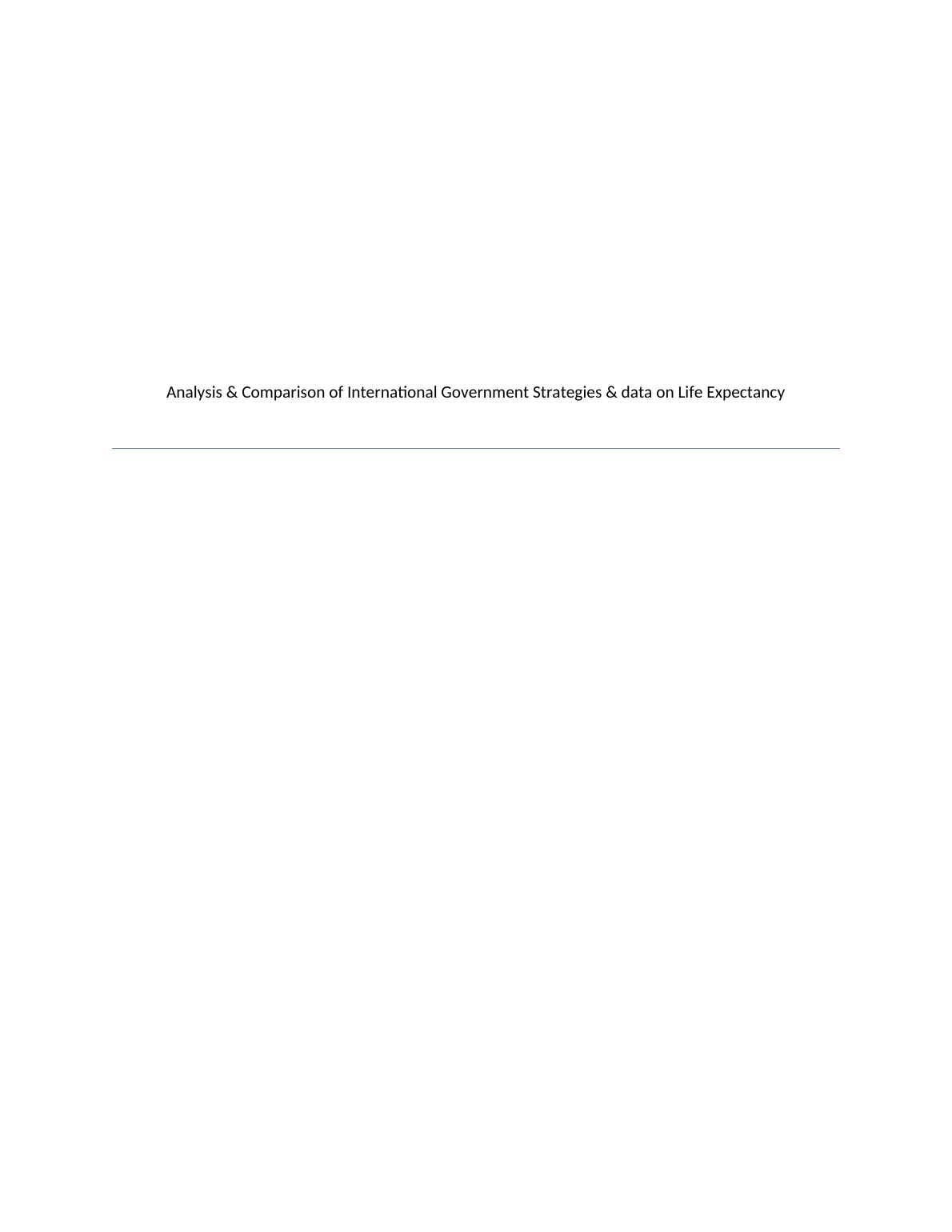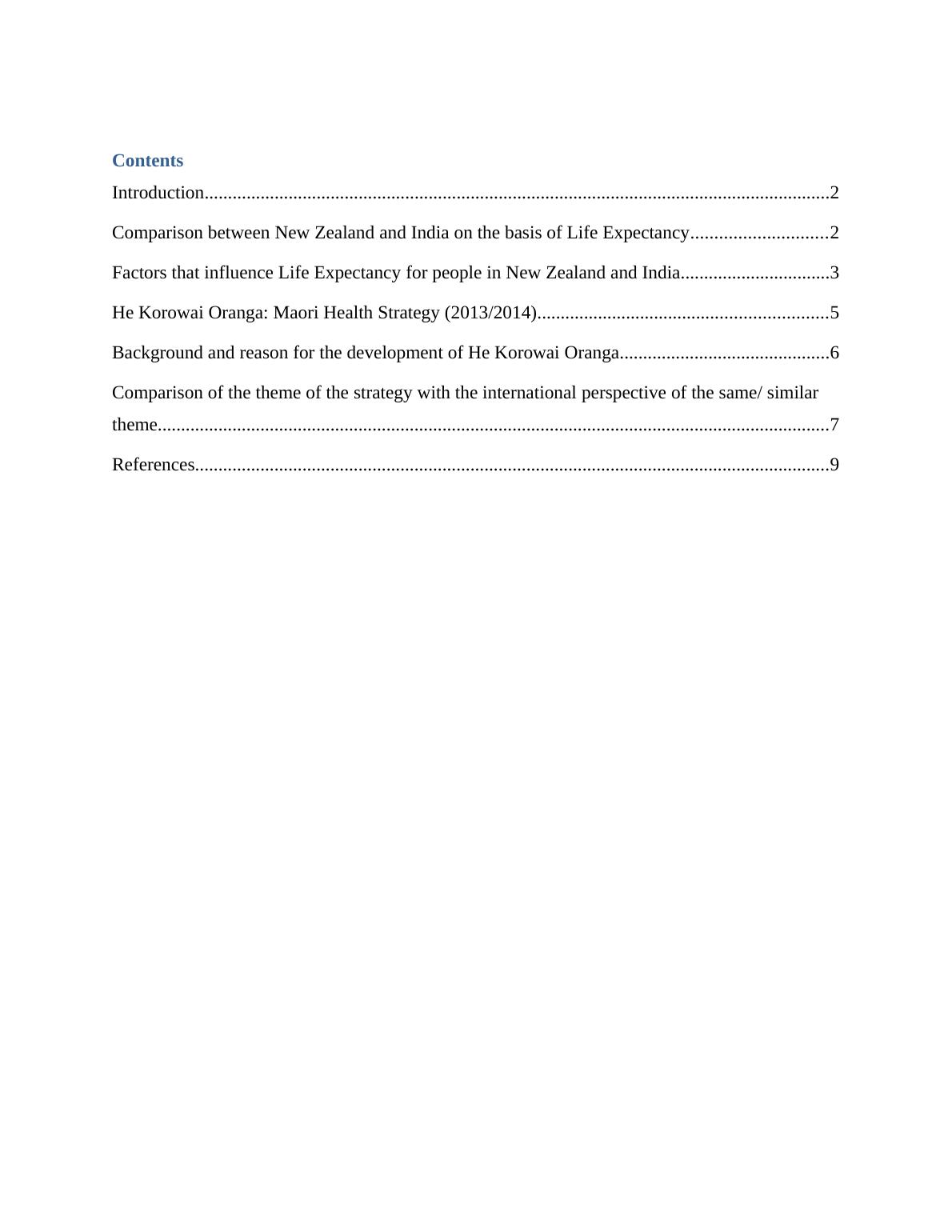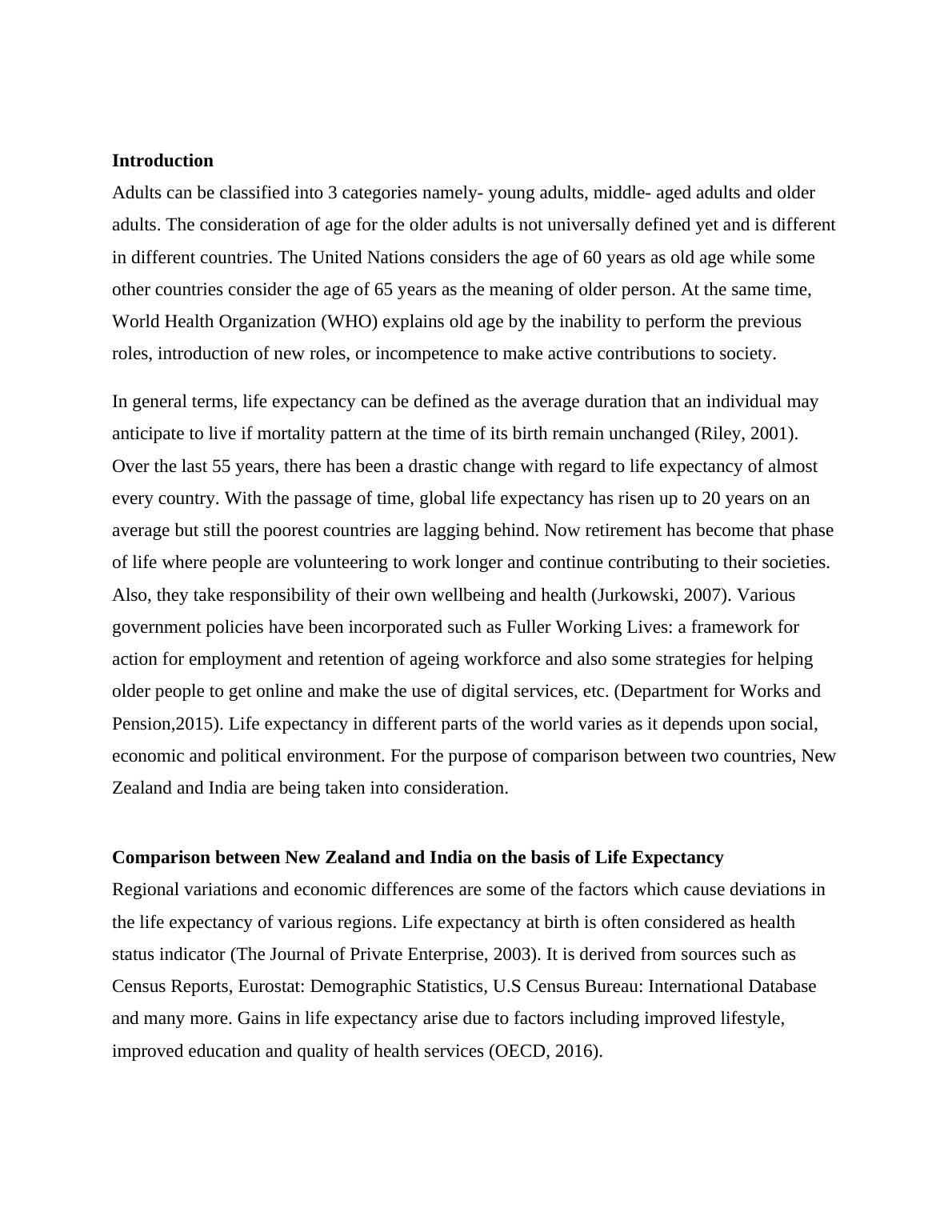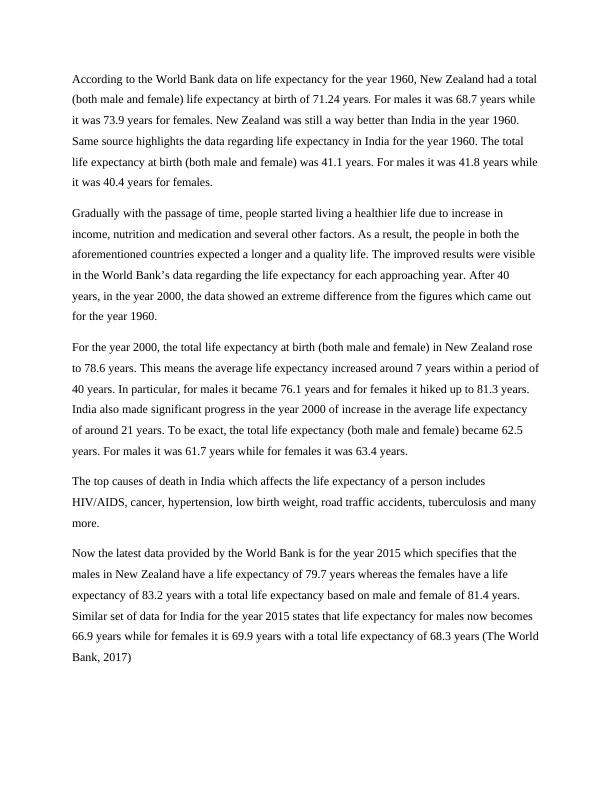Life Expectancy Assignment | International Government Strategies
Added on 2020-05-11
11 Pages3473 Words122 Views
Analysis & Comparison of International Government Strategies & data on LifeExpectancy

ContentsIntroduction......................................................................................................................................2Comparison between New Zealand and India on the basis of Life Expectancy.............................2Factors that influence Life Expectancy for people in New Zealand and India................................3He Korowai Oranga: Maori Health Strategy (2013/2014)..............................................................5Background and reason for the development of He Korowai Oranga.............................................6Comparison of the theme of the strategy with the international perspective of the same/ similar theme................................................................................................................................................7References........................................................................................................................................9

IntroductionAdults can be classified into 3 categories namely- young adults, middle- aged adults and older adults. The consideration of age for the older adults is not universally defined yet and is differentin different countries. The United Nations considers the age of 60 years as old age while some other countries consider the age of 65 years as the meaning of older person. At the same time, World Health Organization (WHO) explains old age by the inability to perform the previous roles, introduction of new roles, or incompetence to make active contributions to society. In general terms, life expectancy can be defined as the average duration that an individual may anticipate to live if mortality pattern at the time of its birth remain unchanged (Riley, 2001). Over the last 55 years, there has been a drastic change with regard to life expectancy of almost every country. With the passage of time, global life expectancy has risen up to 20 years on an average but still the poorest countries are lagging behind. Now retirement has become that phase of life where people are volunteering to work longer and continue contributing to their societies. Also, they take responsibility of their own wellbeing and health (Jurkowski, 2007). Various government policies have been incorporated such as Fuller Working Lives: a framework for action for employment and retention of ageing workforce and also some strategies for helping older people to get online and make the use of digital services, etc. (Department for Works and Pension,2015). Life expectancy in different parts of the world varies as it depends upon social, economic and political environment. For the purpose of comparison between two countries, NewZealand and India are being taken into consideration.Comparison between New Zealand and India on the basis of Life ExpectancyRegional variations and economic differences are some of the factors which cause deviations in the life expectancy of various regions. Life expectancy at birth is often considered as health status indicator (The Journal of Private Enterprise, 2003). It is derived from sources such as Census Reports, Eurostat: Demographic Statistics, U.S Census Bureau: International Database and many more. Gains in life expectancy arise due to factors including improved lifestyle, improved education and quality of health services (OECD, 2016).

According to the World Bank data on life expectancy for the year 1960, New Zealand had a total(both male and female) life expectancy at birth of 71.24 years. For males it was 68.7 years while it was 73.9 years for females. New Zealand was still a way better than India in the year 1960. Same source highlights the data regarding life expectancy in India for the year 1960. The total life expectancy at birth (both male and female) was 41.1 years. For males it was 41.8 years whileit was 40.4 years for females.Gradually with the passage of time, people started living a healthier life due to increase in income, nutrition and medication and several other factors. As a result, the people in both the aforementioned countries expected a longer and a quality life. The improved results were visible in the World Bank’s data regarding the life expectancy for each approaching year. After 40 years, in the year 2000, the data showed an extreme difference from the figures which came out for the year 1960.For the year 2000, the total life expectancy at birth (both male and female) in New Zealand rose to 78.6 years. This means the average life expectancy increased around 7 years within a period of40 years. In particular, for males it became 76.1 years and for females it hiked up to 81.3 years. India also made significant progress in the year 2000 of increase in the average life expectancy of around 21 years. To be exact, the total life expectancy (both male and female) became 62.5 years. For males it was 61.7 years while for females it was 63.4 years.The top causes of death in India which affects the life expectancy of a person includes HIV/AIDS, cancer, hypertension, low birth weight, road traffic accidents, tuberculosis and many more. Now the latest data provided by the World Bank is for the year 2015 which specifies that the males in New Zealand have a life expectancy of 79.7 years whereas the females have a life expectancy of 83.2 years with a total life expectancy based on male and female of 81.4 years. Similar set of data for India for the year 2015 states that life expectancy for males now becomes 66.9 years while for females it is 69.9 years with a total life expectancy of 68.3 years (The WorldBank, 2017)

End of preview
Want to access all the pages? Upload your documents or become a member.
Related Documents
Report on Health of Older Adults in New Zealand and Indialg...
|9
|2842
|24
Health of Older Adults: A Comparison of Life Expectancy and Strategies in New Zealand and Indialg...
|11
|3670
|192
Adult Health Care Assignmentlg...
|14
|3000
|114
Health of Older Adultlg...
|12
|3496
|375
Motor-skill learning in older adults PDFlg...
|10
|2775
|77
HLTH.7105 Healthy Ageing Strategylg...
|15
|3872
|256
